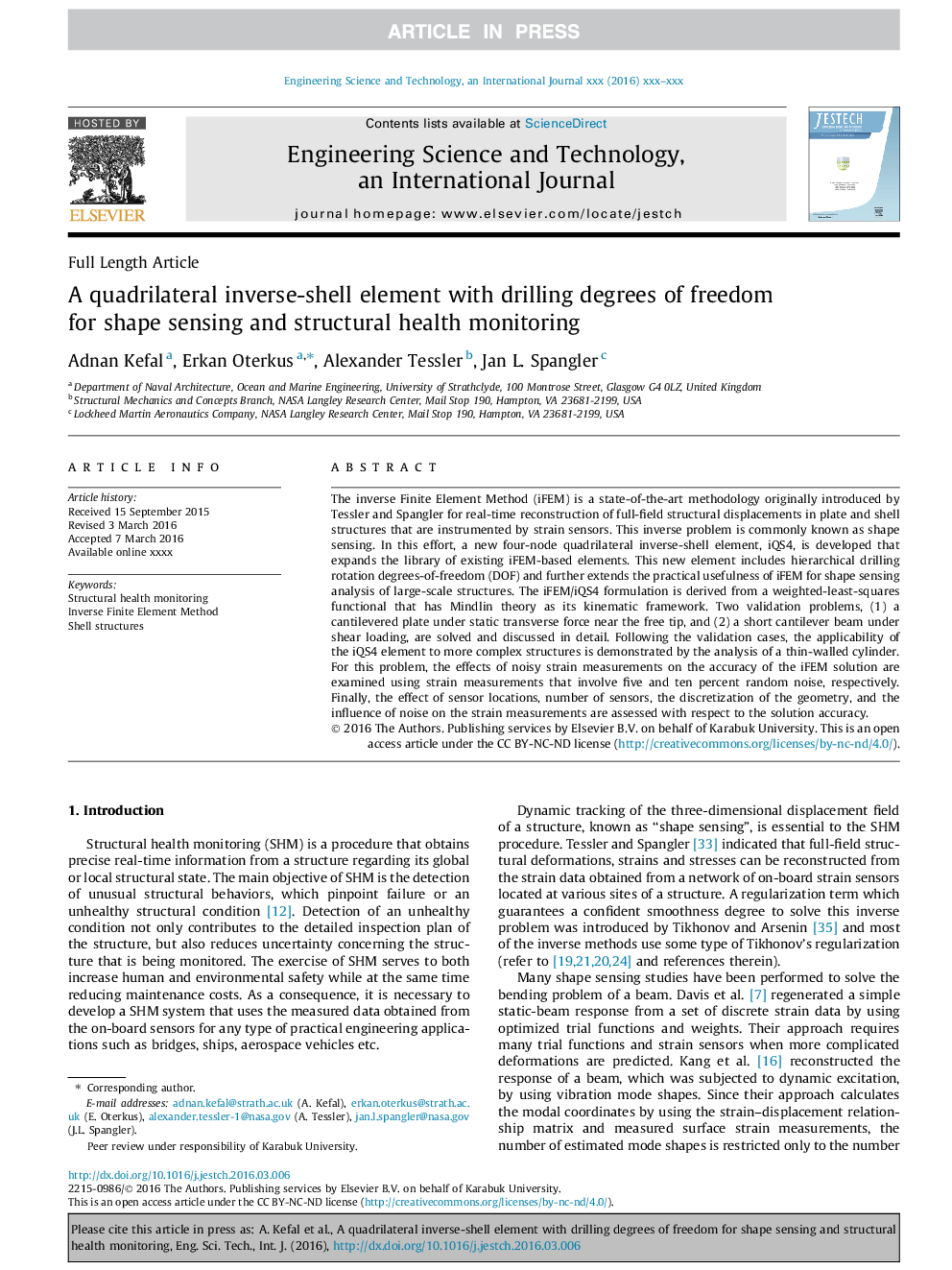| کد مقاله | کد نشریه | سال انتشار | مقاله انگلیسی | نسخه تمام متن |
|---|---|---|---|---|
| 6894303 | 1445576 | 2016 | 15 صفحه PDF | دانلود رایگان |
عنوان انگلیسی مقاله ISI
A quadrilateral inverse-shell element with drilling degrees of freedom for shape sensing and structural health monitoring
ترجمه فارسی عنوان
عنبیه پوسته معکوس چهار ضلعی با درجه حفاری آزادی برای سنجش شکل و نظارت بر سلامت ساختاری
دانلود مقاله + سفارش ترجمه
دانلود مقاله ISI انگلیسی
رایگان برای ایرانیان
کلمات کلیدی
نظارت بر سلامت سازمانی، روش عنصر محدود معکوس، سازه های شل،
موضوعات مرتبط
مهندسی و علوم پایه
مهندسی کامپیوتر
علوم کامپیوتر (عمومی)
چکیده انگلیسی
The inverse Finite Element Method (iFEM) is a state-of-the-art methodology originally introduced by Tessler and Spangler for real-time reconstruction of full-field structural displacements in plate and shell structures that are instrumented by strain sensors. This inverse problem is commonly known as shape sensing. In this effort, a new four-node quadrilateral inverse-shell element, iQS4, is developed that expands the library of existing iFEM-based elements. This new element includes hierarchical drilling rotation degrees-of-freedom (DOF) and further extends the practical usefulness of iFEM for shape sensing analysis of large-scale structures. The iFEM/iQS4 formulation is derived from a weighted-least-squares functional that has Mindlin theory as its kinematic framework. Two validation problems, (1) a cantilevered plate under static transverse force near the free tip, and (2) a short cantilever beam under shear loading, are solved and discussed in detail. Following the validation cases, the applicability of the iQS4 element to more complex structures is demonstrated by the analysis of a thin-walled cylinder. For this problem, the effects of noisy strain measurements on the accuracy of the iFEM solution are examined using strain measurements that involve five and ten percent random noise, respectively. Finally, the effect of sensor locations, number of sensors, the discretization of the geometry, and the influence of noise on the strain measurements are assessed with respect to the solution accuracy.
ناشر
Database: Elsevier - ScienceDirect (ساینس دایرکت)
Journal: Engineering Science and Technology, an International Journal - Volume 19, Issue 3, September 2016, Pages 1299-1313
Journal: Engineering Science and Technology, an International Journal - Volume 19, Issue 3, September 2016, Pages 1299-1313
نویسندگان
Adnan Kefal, Erkan Oterkus, Alexander Tessler, Jan L. Spangler,
